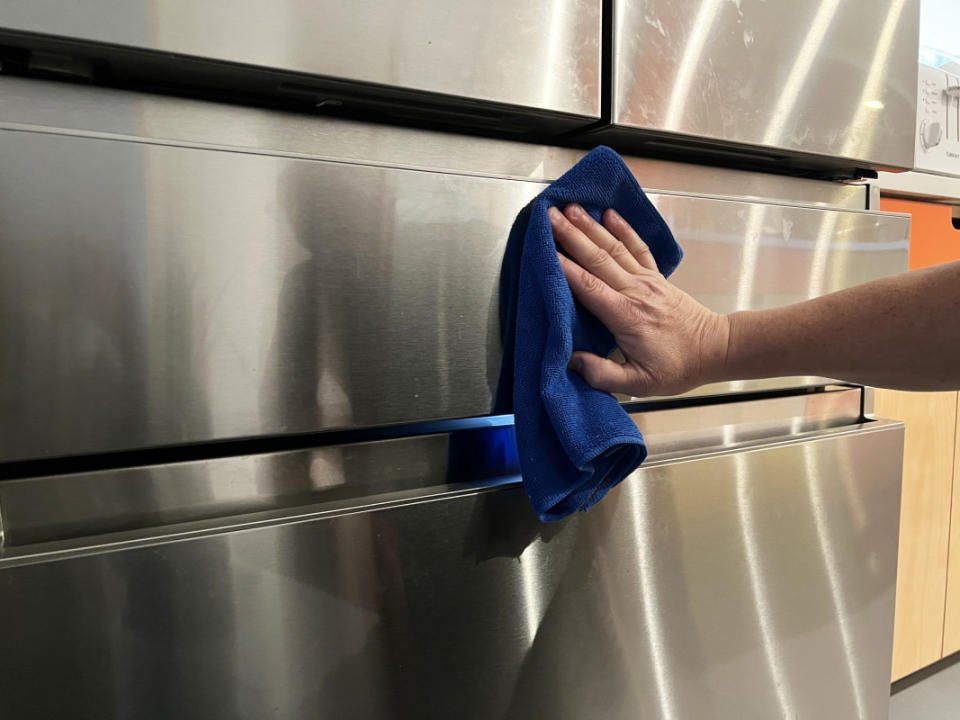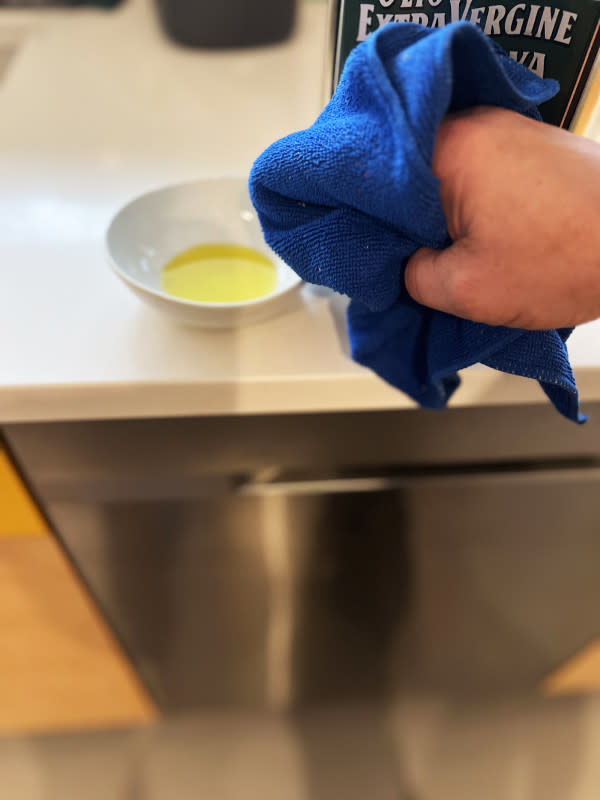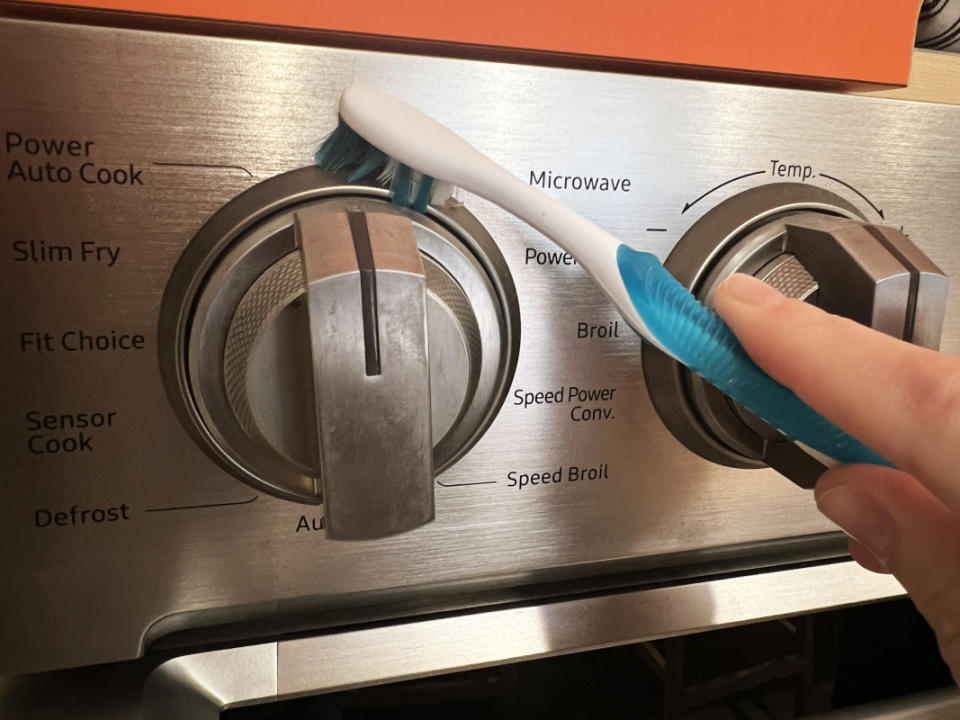How to Clean Stainless Steel Appliances
Stainless steel appliances add a sleek and modern touch to any kitchen, but they can quickly lose their shine without proper maintenance. Here we'll walk you through the essential steps to keep the stainless steel surfaces looking as good as new.
Follow these simple cleaning methods to achieve a spotless and polished finish.
1. Gather Your Supplies
Before diving into the cleaning process, gather the necessary supplies:
White Vinegar
Olive oil or stainless steel cleaner
Microfiber cloth
Mild dish soap
Soft-bristle brush or toothbrush
Water
2. Start With a Gentle Clean
Wipe down your stainless steel appliances with a microfiber cloth dampened with water. This will help remove loose dirt and surface debris.

Emily Fazio
3. Tackle Baked-On Grime with Club Soda
Use club soda for more power, if necessary. The effervescence of club soda, combined with its mild acidity, makes it effective for breaking down and lifting some stains and smudges
4. Lift Stubborn Stains
For tougher stains or fingerprints, mix a few drops of mild dish soap with warm water.
Use a soft cloth or sponge to dampen dirty spots on your kitchen appliances, let it sit for a few minutes, and then scrub the affected areas gently.
Use warm water and then a clean dry towel to rinse and buff.
*** Stay away from abrasive materials such as scrub brushes or steel wool as they can scratch the surface of the stainless steel.
5. Shine with Vinegar
White vinegar is an excellent natural cleaner for stainless steel. Dampen a cloth or fill a spray bottle with a 1:1 combination of water and undiluted vinegar.
Wipe down the appliance in the direction of the grain. This leaves an extra shine and gets rid of water spots.

Emily Fazio
6. Polish with Olive Oil
For an extra level of polish and to minimize future fingerprints, apply a small amount of olive oil to a soft cloth.
Rub it onto the stainless steel surface in circular motions, following the grain. Use sparingly, a little goes a long way!
7. Detail the Small Spaces
Use a soft-bristle brush or toothbrush to clean small and intricate areas, such as around knobs and handles. Ensure that the bristles are soft to prevent any scratches.

Emily Fazio
8. Final Wipedown
Finish the job by dusting the stovetop, microwave, or refrigerator with a clean dry microfiber cloth.
Tips For Best Results
Always wipe in the direction of the grain to prevent scratching.
Do not use abrasive cleaners or pads.
Test new cleaning products on a small, inconspicuous area first.
Daily cleaning is an easy habit that will take care of those grease particles before they become a real chore.
Be patient. Grease splatters and stubborn fingerprints may seem never-ending, but with time and some elbow grease, your kitchen appliances will shine again.
Related: The Best Ways to Clean Your Baking Sheets
8 Cleaning Products You Should Never Use on Stainless Steel
It might sound tough, but stainless steel is vulnerable to damage with the wrong cleaning products. Keep these routine cleaning products away from your stainless steel!
Abrasive Cleaning Pads, Scouring Pads, Steel Wool, or Wire Brushes. These can scratch the finish and leave permanent marks.
Baking Soda and Abrasive Scouring Powders. These gritty materials are meant to cut through dirt but can leave behind unsightly scratches.
Bleach. Chlorine-based cleaners can cause pitting and corrosion, leading to irreversible damage.
Ammonia-Based Cleaners. These dull the finish and damage the protective coating of the stainless steel.
Hard Water Stain Removers. These acidic products can cause corrosion and discoloration.
Tap Water with High Mineral Content. If your area has hard water, clean your stainless steel with distilled water to avoid potential staining.
Furniture Polish or Wax. These substances leave behind a sticky residue that will attract dust.
Colored or Patterned Paper Towels. Stick to plain white or microfiber cloths as colored or patterned paper towels can transfer their dyes to the metal surface.
